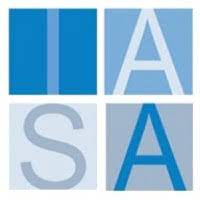IASA - Product Roadmap Canvas
Canvas Overview: The product roadmap canvas is used most commonly by solution architects to describe a solution roadmap in either an agile or waterfall solution. The canvas provides areas for events, business visible elements, technology elements and learning for the product. Used by product teams and architects alike, it visualizes the overall product vision, key goals, essential initiatives, and a development timeline.
To work effectively with the canvas, start by gathering stakeholders invested in the product’s success. This typically includes product managers, designers, developers, marketing, and sales representatives. Next, define the timeframe for your roadmap – a quarter or a year are common choices. This helps to focus on the most critical initiatives within that period.
Once assembled, begin defining your business goals. What do you hope to achieve with this product? Ensure these goals are measurable and time-bound. Alongside business goals, identify the specific needs of your target users. What problems does your product solve for them, and how will it improve their lives? User research techniques such as surveys, interviews, and usability testing are invaluable here. From user needs, craft user stories. These are short descriptions focused on how users will interact with your product and the value it delivers.
Now, using your user stories as a guide, identify the initiatives necessary to achieve your business goals. Initiatives are larger projects that will deliver specific outcomes. Consider the time and resources required for each initiative, then strategically plot them on your product roadmap timeline.
How to use this canvas
Step 1: Gather Your Materials
Product Roadmap Canvas Template: You can find a template here and in Miro.
Sticky Notes: Use these for brainstorming and capturing ideas.
Markers: For writing on the canvas and sticky notes.
Step 2: Assemble Your Team
Bring together a cross-functional team invested in the product’s success. This typically includes product managers, designers, developers, marketing, sales, and potentially other relevant stakeholders.
Step 3: Define Business Goals
Start with the “why” behind your product. What are the specific business goals you are aiming to achieve? Examples might be increasing revenue, expanding market share, or improving customer satisfaction.
Make sure your goals are SMART: Specific, Measurable, Achievable, Relevant, and Time-bound.
Step 4: Understand User Needs
Dive deep into the problems your product solves. What pain points does it address for your target users? How does it make their lives easier or better?
If you don’t already have this data, conduct user research through surveys, interviews, usability testing, and other methods.
Step 5: Write User Stories
Craft short, simple descriptions of how users will interact with your product. Frame them from the user’s perspective, focusing on the value the product delivers. For example: “As a busy project manager, I want to easily track project progress on a visual dashboard so I can quickly identify any bottlenecks.”
Step 6: Identify Initiatives
Brainstorm the major projects or features that will deliver the value outlined in your user stories and achieve your business goals.
Consider the resources (time, people, budget) needed for each initiative.
Step 7: Prioritize and Map to Timeline
Determine the most critical initiatives that align with your business goals and available resources.
Place these initiatives on your roadmap timeline, being mindful of any dependencies between initiatives.
Step 8: Review and Iterate
Present the roadmap to your team and stakeholders. Gather feedback, make adjustments, and seek alignment.
Remember, a product roadmap is a living document. Revisit it regularly to reflect changing priorities, new market information, or user feedback.
Important Considerations:
Keep it Visual: The canvas is meant to provide a clear overview. Avoid excessive text, focusing instead on keywords and short descriptions.
Stay Focused: Limit the timeframe to a quarter or a year for optimal focus and execution.
Be Flexible: Adapting your roadmap as new information becomes available or priorities shift is key to its success.
Let me know if you want a more specific example or assistance in filling out a particular section of the canvas!
About IASA Global: IASA Global is a non-profit association for ALL Technology Architects which was established in 2002. The association is committed to improving the quality of the BT architecture industry by developing and delivering standards, education programs and developing accreditation programs and services that optimize the development of the architecture profession. The IASA network and membership consists of approximately 70,000 people in over 50 countries.
IASA Global has created the world's first and only Business Technology Architecture Body of Knowledge, (BTABoK), which is a free public archive of Business Technology architecture best practices, skills, and knowledge developed from the experience of individual and corporate members of IASA.
IASA has added templates for over 30 of the most frequently used BTABoK structured canvases into the Miroverse to help accelerate how Technology Architects collaborate on the architecture of the future. Give one a try today, and learn more about IASA at https://iasaglobal.org/.
Categories
Similar templates





